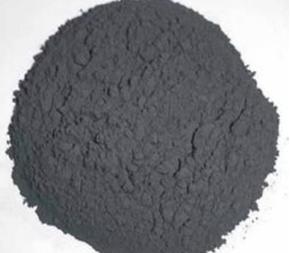Among many compounds, metal borides have better high-temperature performance than metal carbides. For example, diboride (TiB2) cermet products are more suitable for use than titanium carbide (TiC) and tungsten carbide (WC) cermet products. Use under high temperature and high corrosion working conditions. Titanium diboride powder is gray (or gray-black), and its anti-oxidation temperature in the air can reach 1100℃. As a new type of ceramic material, it has excellent physical and chemical properties. In addition to the extremely high melting point, the hardness is also large. Stability, electrical and thermal conductivity, and mechanical properties at high temperatures are all excellent.
The characteristics of titanium diboride as structural materials and functional materials
1. In terms of structural materials
The high strength and hardness of titanium boride make it possible to make cutting tools, wire-drawing films, sandblasting nozzles and hard tool materials. At the same time, it can also be an additive for composite materials.
2. In terms of functional materials
The resistivity of titanium boride is very similar to that of pure iron, so its application in functional materials is very useful. Through the electrical properties of titanium boride, flexible PTC materials can be made

Preparation method of titanium diboride raw material
The current methods for preparing titanium diboride raw materials mainly include carbothermal reduction method, self-propagating high temperature and synthesis method, mechanochemical reaction method, vapor deposition method, ball milling method, etc.
①Carbothermal reduction method
Using titanium and boron oxides as raw materials, carbon black as a reducing agent, long-term high-temperature carbon reduction treatment in a carbon tube furnace, the purity of the synthesized titanium diboride powder depends on the purity of the raw material powder. This method is a process that is frequently used in industrial production. The disadvantage is that the obtained titanium diboride powder has a large particle size and a high impurity content.
②Self-propagating high-temperature synthesis (SHS)
This method is generally to press the raw material mixture to be reacted into a block and then ignite the reaction at one end of the block. The huge heat released by the reaction causes the adjacent materials to react, and finally, a combustion wave spreading at a speed v is formed. Finally, as the combustion wave advances, the raw material mixture is transformed into the final product. Due to the self-purification effect of the self-propagating high-temperature synthesis process, the product purity is high, so the obtained powder is easy to be further sintered, and the external energy consumption is low. If combined with other special technical means, dense titanium diboride can be directly prepared material.
③Mechanochemical reaction method (MR)
In this method, the reactant powder is placed in a high-energy ball mill, and the powder is repeatedly deformed to broken under the action of the squeezing and shearing of the grinding ball. The violent friction and collision of the ball milling medium cause the mechanical energy to be converted into chemical energy, thereby synthesizing the required reactants. Compared with the first two methods to prepare titanium diboride, the mechanochemical reaction method has the advantages of low synthesis temperature, wide source of raw materials and low cost.
Application direction of titanium diboride
Titanium diboride and its composite materials can be combined with other metals and ceramic-based polymers to form a series of new materials with commercial application value.
①Titanium diboride can be used as a grain refinement and particle strengthening additive. It can be mixed into aluminum-based, copper-based titanium-aluminum alloy and iron-based materials to greatly improve the mechanical and physical properties of the material. This grain refinement and particle strengthening effect will increase as the purity and fineness of the titanium diboride powder increase.
②Titanium diboride can be composited with silicon carbide, aluminum nitride, boron nitride, titanium carbide and other non-oxide ceramics, or it can be composited with alumina and other oxide ceramic materials. A large number of experimental studies have shown that the prepared new composite material has better mechanical strength and fracture toughness and can be one of the high-quality materials for armor protection.
③Titanium diboride particles mixed with high-performance resin can be made into PTC heating ceramics and head-type PTC materials, which have the characteristics of safety, power saving, reliability, and easy processing and molding. They are electric irons, electric blankets, electric ovens, and air conditioners. A key high-tech for the upgrading of household appliances such as hot-air heating.
④Titanium diboride has excellent electrical conductivity and excellent res.


